Order Passeriformes Rank Subspecies | Phylum Chordata Family Emberizidae Higher classification Grasshopper sparrow | |
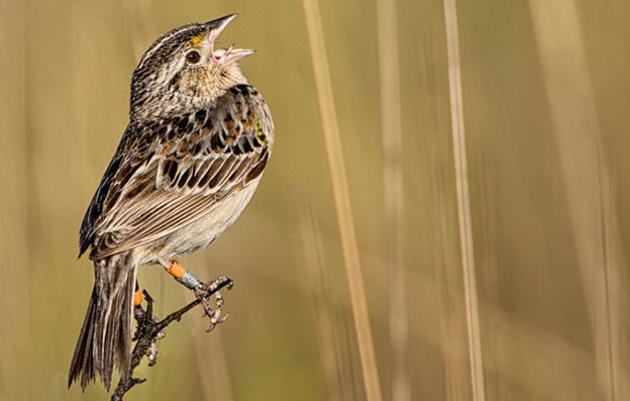 | ||
Scientific name Ammodramus savannarum floridanus Similar Grasshopper sparrow, Bird, Ammodramus, Cape Sable seaside s, Bachman's sparrow | ||
Florida grasshopper sparrow
The Florida grasshopper sparrow (Ammodramus savannarum floridanus) is an endangered subspecies of grasshopper sparrow native to the dry prairies of south-central Florida.
Contents
- Florida grasshopper sparrow
- Florida grasshopper sparrows hatch at rscf
- Description
- Habitat
- Diet
- Population Trends
- References
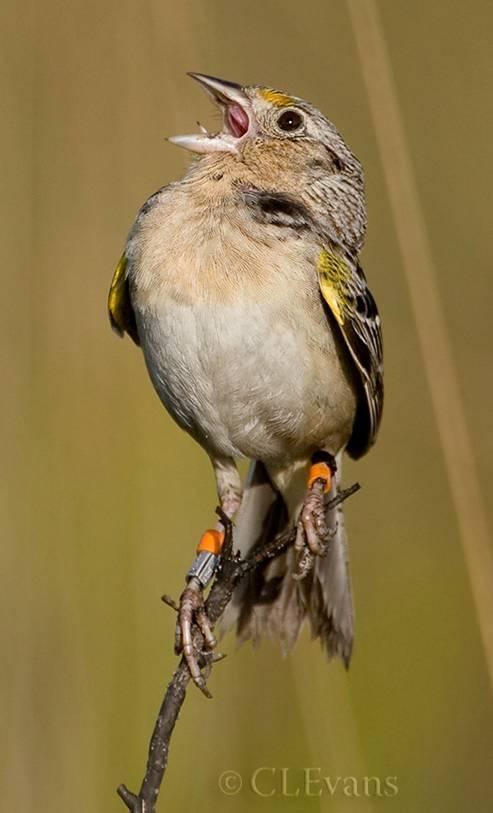
The Florida grasshopper sparrow is one of four subspecies of grasshopper sparrows in North America, and is perhaps the most endangered. Despite biologists' best efforts, attempts at improving the declining population have been largely unsuccessful.
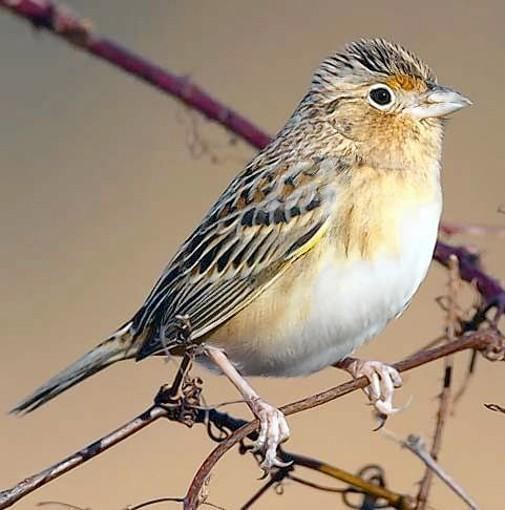
Florida grasshopper sparrows hatch at rscf
Description
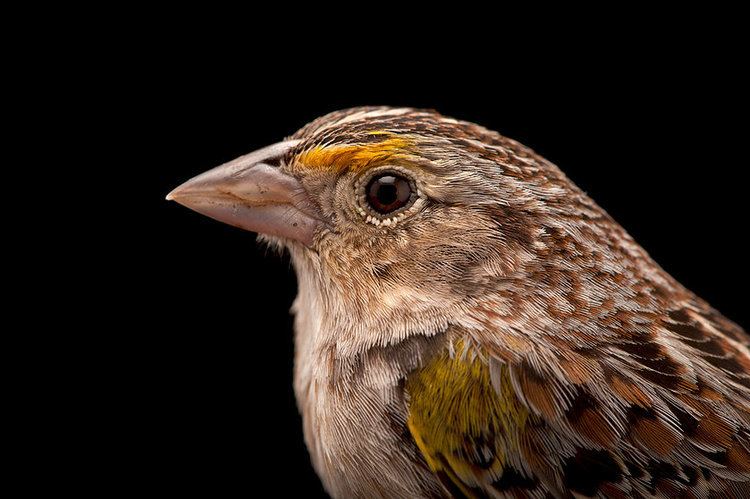
The Florida grasshopper sparrow is a small sparrow with a short tail and rounded head, averaging 13 cm in total length when fully grown. Like most grasshopper sparrows, their wings are brown, white, and grey in color, with patches of yellow on their alula and supercilium. Adult sparrows have white undersides with a buff throat and breast, while juveniles have streaked breasts. The Florida grasshopper sparrow has a longer bill and tarsi than other subspecies, and lacks reddish streaks on its nape.

The song of the Florida grasshopper sparrow sounds much like that of a grasshopper, which is where it gets its name. Males only sing a few hours a day during the breeding season, and they often perch on twigs or dead palmetto leaves to sing when available. Singing most frequently occurs during the early morning and early evening hours, around sunrise and sunset.
Habitat
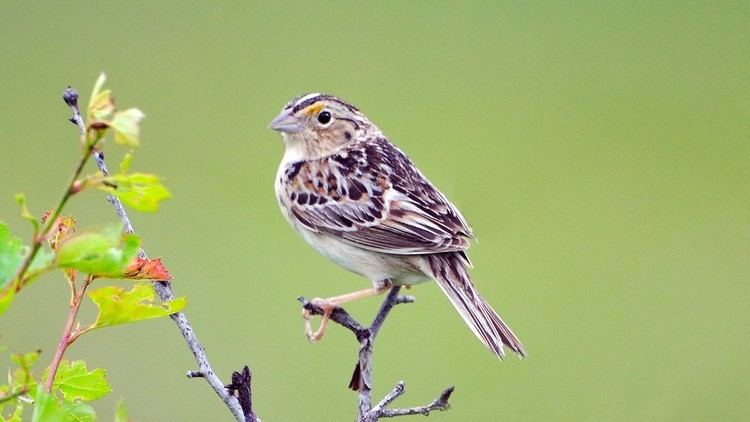
Though some migratory grasshopper sparrows are distributed throughout parts of both North and South America, the Florida grasshopper sparrow is a non-migratory species, and is thus limited in distribution to the prairie region of south-central Florida. Counties in Florida where this species has been sighted include Glades, Highlands, Polk, Okeechobee, and Osceola counties.
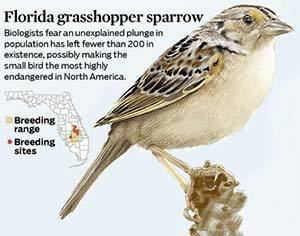
Habitat requirements for the Florida grasshopper sparrow are quite specific. Recommended habitat consists of large tracts of poorly drained grasslands with a frequent history of fire and a limited number of trees (less than one tree per acre). Common plant species found in this habitat include bluestem and wiregrass, with occasional saw palmettos as well. As grasshopper sparrows are largely a ground-dwelling species, some bare ground is necessary as well to provide areas for movement and foraging purposes.
Florida grasshopper sparrows are the only subspecies of grasshopper sparrow known to breed in the state of Florida. They are known to nest between April and June on the sandy ground in excavated depressions. Their nests are often constructed of available plant matter nearby, which mainly consists of the leaves of bluestem and wiregrass. Females are known to lay between 3-5 eggs, and the young fledge about 10 days after hatching. Nest success rates are often quite low, with one study observing success rates of between 10-33% at multiple sites.
Diet
Florida grasshopper sparrows are omnivores, with most of their diet consisting of insects, such as grasshoppers, crickets, beetles, and moths. Most of the vegetation in the sparrow's diet is made up of sedge seeds and star grass seeds. Florida grasshopper sparrows forage near the ground, and thus, frequent fires are essential to maintain areas of bare ground for foraging.
Population Trends
Until large scale surveys were undertaken in the 1980's to determine the abundance and distribution of the species, the number of Florida song sparrows present in the wild was largely unknown. Following these surveys, it was determined by the US Fish and Wildlife Service that the Florida song sparrow be listed as endangered on the Endangered Species List. Subsequent surveys performed in the 1990's estimated fewer than 500 adult Florida song sparrows, and recent work estimates that, under present habitat conditions, there is a 22% chance of extinction of the species within the next 50 years. The survival of the species is highly dependent upon habitat availability, with another model correlating a loss of habitat to a 66% chance of extinction.
